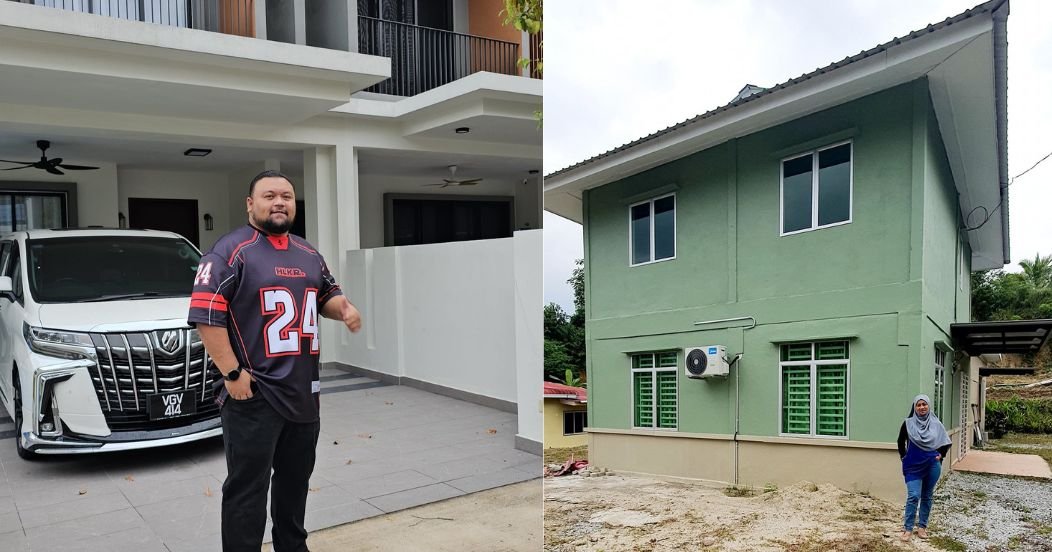Pelaburan Emas
Sorry, Not enough posts for this block, please try to add more posts...

Perkahwinan
Sorry, Posts you requested could not be found...
latest posts
Perancangan kewangan adalah satu proses penting yang melibatkan penetapan matlamat kewangan dan tindakan yang diperlukan untuk mencapainya. Dalam konteks generasi muda, perancangan kewangan menjadi semakin relevan kerana mereka kini berhadapan dengan pelbagai cabaran kewangan yang tidak pernah dialami oleh generasi sebelumnya. Kenaikan kos sara hidup, inflasi, dan ketidakpastian ekonomi menuntut setiap individu, khususnya yang muda, untuk mengambil langkah-langkah proaktif dalam pengurusan kewangan. Tanpa perancangan yang betul, individu mungkin berisiko mengalami kesulitan kewangan di masa depan.
Pentingnya perancangan kewangan tidak boleh dipandang remeh dalam era moden ini. Dengan perkembangan teknologi dan akses kepada pelbagai maklumat kewangan, generasi muda mempunyai peluang yang lebih besar untuk merancang kewangan mereka dengan bijak. Namun, dengan banyak pilihan yang ada, mereka juga perlu lebih berwaspada agar tidak terjebak dalam keputusan pelaburan yang kurang bijak. Mempelajari cara untuk menguruskan pendapatan, menjadualkan perbelanjaan, dan melakukan simpanan adalah kemahiran penting yang perlu dikuasai.
Salah satu pilihan yang semakin popular sebagai alat pelaburan adalah emas. Emas bukan sahaja dilihat sebagai aset pelindung nilai terhadap inflasi, tetapi juga sebagai satu cara untuk menyimpan kekayaan. Dalam konteks perancangan kewangan, pelaburan dalam emas memberikan peluang yang baik untuk diversifikasi portfolio pelaburan. Dari semasa ke semasa, nilai emas telah terbukti stabil, menjadikannya pilihan yang menarik bagi generasi muda yang ingin merancang masa depan kewangan mereka dengan lebih kukuh.
Mengapa Perancangan Kewangan itu Penting?
Perancangan kewangan adalah proses yang melibatkan penetapan matlamat kewangan dan cara untuk mencapainya. Ia memainkan peranan yang amat penting dalam kehidupan individu, terutamanya bagi generasi muda yang baru memulakan perjalanan kewangan mereka. Salah satu sebab utama mengapa perancangan kewangan adalah penting adalah kerana ia membantu dalam pengurusan hutang. Dengan menguruskan hutang secara berkesan, individu dapat mengelakkan situasi yang boleh membebankan kewangan mereka pada masa hadapan. Ini termasuk memahami berapa banyak yang perlu dibayar setiap bulan dan memastikan bahawa pembayaran hutang tidak akan mengganggu kemampuan untuk memenuhi keperluan harian.
Selain itu, perancangan kewangan juga membantu dalam simpanan untuk masa depan. Generasi muda sering kali gagal untuk memikirkan tentang simpanan, tetapi perancangan kewangan yang baik memberi mereka panduan untuk menyimpan lebih awal. Ini boleh membantu dalam membina dana kecemasan yang sangat penting. Dana ini bertindak sebagai sokongan kewangan semasa menghadapi situasi yang tidak dijangka, seperti kehilangan pekerjaan atau perbelanjaan perubatan. Dengan adanya perancangan yang teliti, individu dapat memastikan bahawa mereka mempunyai perlindungan kewangan yang mencukupi.
Kesan positif dari perancangan kewangan yang baik tidak hanya terhad kepada pengurusan hutang dan simpanan, tetapi juga merangkumi pengurangan tekanan kewangan. Apabila seseorang tahu bahawa mereka telah merencanakan kewangan mereka dengan baik, mereka cenderung untuk merasa lebih tenang dan kurang tertekan tentang masa depan mereka. Ini menjadikan perancangan kewangan bukan sahaja satu alat untuk mencapai matlamat kewangan, tetapi juga kunci kepada kesejahteraan mental generasi muda. Dengan mengubah cara mereka berfikir tentang kewangan, mereka dapat mencipta masa depan yang lebih stabil dan sejahtera.
Wajib baca – Kumpul Deposit Kereta Axia Guna Emas
Emas dalam Dunia Pelaburan Moden
Emas terus memainkan peranan penting dalam pelaburan moden, terutamanya bagi generasi muda yang semakin sedar tentang kepentingan perancangan kewangan. Dalam konteks pelaburan, emas sering dianggap sebagai aset yang selamat, terutamanya ketika menghadapi ketidakpastian ekonomi. Sejarah menunjukkan bahawa nilai emas cenderung stabil dalam jangka panjang, menjadikannya pilihan menarik ketika pasaran kewangan menunjukkan tanda-tanda volatiliti.
Salah satu sebab utama mengapa emas dipandang sebagai aset pelindung adalah kemampuannya untuk bertahan terhadap inflasi. Ketika wang tunai kehilangan nilainya akibat inflasi, emas biasanya mengekalkan atau bahkan meningkatkan nilainya. Oleh itu, pelaburan dalam emas dapat membantu generasi muda untuk melindungi simpanan mereka dan meminimalkan risiko kerugian akibat fluktuasi nilai mata wang. Selain itu, emas juga tidak terpengaruh oleh faktor politik secara langsung, menjadikannya pilihan yang lebih stabil berbanding dengan kebanyakan instrumen pelaburan lain.
Untuk generasi muda, pelaburan dalam emas boleh dilakukan melalui pelbagai cara. Dari membeli barang kemas, syiling emas, atau pelaburan dalam emas fizikal seperti jongkong, hingga melabur dalam dana pertukaran yang berasaskan emas (ETF). Setiap cara mempunyai kelebihan dan risiko tersendiri, dan pemilihan cara pelaburan yang tepat bergantung kepada matlamat kewangan individu. Oleh itu, adalah penting bagi mereka untuk memahami cara pelaburan yang sesuai dengan strategi kewangan mereka.
Emas mampu menjadi komponen penting dalam portfolio pelaburan. Dengan menyertakan emas dalam pelaburan, generasi muda dapat mencipta keseimbangan yang lebih baik dalam pengagihan aset mereka, sekali gus memperkukuh keseluruhan prestasi kewangan. Dengan pengetahuan dan perancangan yang tepat, emas boleh membantu mereka mencapai kestabilan kewangan jangka panjang dan memenuhi matlamat kewangan mereka.
Kestabilan Emas sebagai Aset
Emas telah lama diakui sebagai aset yang stabil dan berharga di pasaran global. Sejarah harga emas menunjukkan corak yang menarik; walaupun terdapat variasi jangka pendek, dalam jangka panjang, harga emas menunjukkan kecenderungan untuk meningkat. Sebagai contoh, semasa krisis ekonomi, emas sering kali menjadi pilihan pelabur untuk melindungi kekayaan mereka, sekali gus mengesahkan statusnya sebagai aset yang selamat. Sejak dari zaman purba hingga kini, emas telah menjadi simbol kekayaan dan kestabilan, menjadikannya pilihan pelaburan yang popular.
Salah satu kelebihan utama emas ialah kemampuannya bertindak sebagai pelindung inflasi. Dalam situasi di mana nilai mata wang jatuh akibat inflasi yang tinggi, pelaburan dalam emas dapat membantu mengekalkan kuasa beli pelabur. Ini kerana harga emas biasanya meningkat semasa inflasi, menjadikannya alat perlindungan yang berkesan. Kestabilan harga emas dalam menghadapi pelbagai cabaran ekonomi memperkuatkan pandangan bahawa ia adalah aset yang dapat dipercayai untuk jangka masa panjang.
Keupayaan emas untuk mengekalkan nilai dalam jangka panjang adalah salah satu pencapaian terbaiknya. Berbanding dengan aset lain seperti saham dan bon yang boleh mengalami fluktuasi harga secara drastik, emas cenderung mengalami kenaikan yang lebih stabil. Fenomena ini menjadikan emas sebagai pilihan menarik untuk generasi muda yang ingin mempelbagaikan portfolio pelaburan mereka. Dalam dunia yang semakin tidak menentu, memahami kestabilan emas sebagai aset bukan sahaja memberi manfaat bagi pelabur, tetapi juga membolehkan mereka membuat keputusan yang lebih bijak tentang cara mengurus kewangan dan pelaburan mereka bagi masa depan yang lebih cerah.
Wajib baca – Emas Public Gold: 5 Kelebihan dan Manfaatnya
Cara Memulakan Pelaburan Emas
Pelaburan emas adalah pilihan yang semakin popular di kalangan generasi muda. Ini kerana emas diakui sebagai aset yang selamat dan stabil dari segi nilai. Jika anda berminat untuk memulakan pelaburan emas, terdapat beberapa langkah yang boleh diambil untuk memastikan anda membuat keputusan yang bijak.
Langkah pertama adalah mengenal pasti jenis pelaburan emas yang ingin anda terokai. Pelaburan emas boleh dibahagikan kepada beberapa pilihan, termasuk emas fizikal dan produk pelaburan yang berkaitan dengan emas. Emas fizikal merujuk kepada barang seperti syiling dan jongkong emas, manakala dana yang berkaitan dengan emas termasuklah dana dagangan yang melabur dalam emas. Pilihan lain termasuklah kontrak niaga hadapan dan pelaburan dalam syarikat perlombongan emas.
Setelah menentukan pilihan pelaburan, langkah seterusnya adalah memilih peniaga emas yang boleh dipercayai. Anda harus melakukan penyelidikan mendalam mengenai peniaga di pasaran, termasuk memeriksa latar belakang dan reputasi mereka. Pastikan peniaga tersebut mempunyai lesen aktiviti perdagangan dan diiktiraf oleh badan berkuasa. Ini penting untuk mengelakkan penipuan dan memastikan keselamatan pelaburan anda.
Sebelum melakukan pembelian, adalah bijak untuk menentukan jumlah pelaburan yang anda mampu. Pastikan anda tidak melabur lebih daripada yang anda mampu untuk kehilangan. Anda juga perlu memikirkan tentang lokasi penyimpanan emas fizikal, sama ada di rumah atau di bank. Pilihan penyimpanan yang selamat adalah penting bagi menjaga pelaburan anda.
Dengan langkah-langkah yang tepat, memulakan pelaburan emas bukanlah satu tugas yang sukar. Pelaburan ini tidak hanya memberi pulangan yang baik tetapi juga membina kestabilan kewangan jangka panjang.
Risiko dan Cabaran dalam Pelaburan Emas
Pelaburan emas sering dianggap sebagai satu strategi yang selamat, tetapi pelabur muda perlu menyedari bahawa terdapat risiko dan cabaran tertentu yang boleh mempengaruhi pelaburan mereka. Salah satu risiko utama adalah fluktuasi harga emas, yang boleh dipengaruhi oleh pelbagai faktor, termasuk perubahan ekonomi global, kadar faedah, dan permintaan serta penawaran di pasaran. Fluktuasi ini boleh menyebabkan nilai emas naik dan turun secara drastik, memerlukan pemantauan yang teliti bagi mereka yang ingin memperoleh keuntungan jangka pendek. Oleh itu, pelabur perlu mempunyai pemahaman yang mendalam tentang pasaran sebelum membuat keputusan pelaburan.
Selain fluktuasi harga, penyimpanan emas fizikal juga merupakan cabaran yang perlu dihadapi. Emas yang disimpan dalam bentuk fizikal memerlukan lokasi yang selamat untuk mengurangkan risiko kecurian. Pilihan termasuk peti simpanan bank atau penyimpanan di lokasi yang boleh dipercayai. Pelabur muda perlu mempertimbangkan kos tambahan yang terlibat dalam penyimpanan dan insurans emas mereka. Ini dapat mengurangkan margin keuntungan dan mempengaruhi keputusan pelaburan akhir.
Penipuan dalam pasaran emas juga merupakan isu yang signifikan. Malah, terdapat penipuan yang melibatkan penjualan emas palsu, yang boleh mengecewakan pelabur yang tidak berpengalaman. Untuk mengelakkan menjadi mangsa penipuan, pelabur disarankan untuk berurusan hanya dengan penjual yang berlesen dan bereputasi tinggi. Selain itu, mereka juga harus bijak dalam melaksanakan penyelidikan sebelum membeli emas, sama ada dalam bentuk bar, koin, atau instrumen pelaburan lain. Kesedaran terhadap risiko dan cabaran ini dapat membantu pelabur muda membuat keputusan yang lebih baik dalam pelaburan emas mereka.
Perancangan Kewangan untuk Generasi Muda
Perancangan kewangan merupakan langkah fundamental bagi generasi muda untuk mencapai kestabilan kewangan dan seterusnya, kejayaan dalam pelbagai aspek kehidupan. Dalam konteks ini, mendidik diri sendiri tentang pengurusan kewangan adalah sangat penting. Generasi muda harus memulakan dengan memahami asas-asas kewangan, termasuk cara menganggarkan pendapatan dan perbelanjaan. Melalui penubuhan anggaran bulanan, mereka dapat memantau dan menilai corak perbelanjaan mereka dengan lebih baik. Pemilihan instrumen pelaburan yang sesuai juga adalah komponen penting dalam perancangan kewangan.
Dalam usaha untuk menubuhkan anggaran bulanan, generasi muda harus mengenal pasti sumber pendapatan mereka serta kategori perbelanjaan yang berbeza. Ini boleh termasuk perbelanjaan tetap seperti sewa, utiliti, dan makanan, serta perbelanjaan tidak tetap seperti hiburan dan pembelian impulsif. Dengan mengutip data ini, mereka dapat merancang perbelanjaan bagi setiap bulan dengan tepat, sekaligus memastikan tiada pembaziran berlaku. Menyimpan sekurang-kurangnya 20% daripada pendapatan untuk simpanan dan pelaburan adalah amalan bijak yang patut diterapkan.
Selain itu, penting juga untuk generasi muda memilih instrumen pelaburan yang sesuai dengan tujuan kewangan mereka. Pelaburan dalam aset seperti saham, bon, dan emas boleh diambil kira sebagai pilihan. Melalui pemahaman tentang risiko dan pulangan bagi setiap instrumen ini, mereka dapat membuat keputusan pelaburan yang lebih baik. Dengan pendidikan kewangan yang mencukupi, generasi muda tidak hanya menjadi pelabur yang lebih bijak, tetapi juga mampu merancang kewangan mereka untuk mengatasi cabaran masa depan dengan lebih berkesan. Oleh itu, perancangan kewangan yang baik adalah kunci kepada kemapanan kewangan sepanjang hayat.
Kesimpulan
Dalam dunia yang semakin tidak menentu dan penuh cabaran ini, perancangan kewangan menjadi satu kemestian bagi generasi muda. Adalah penting untuk memahami bahawa pengurusan kewangan tidak hanya merangkumi aspek menyimpan, tetapi juga melibatkan keputusan pelaburan yang bijak. Dengan mengintegrasikan pelaburan emas dalam strategi kewangan, individu dapat memanfaatkan potensi aset ini sebagai perlindungan nilai yang berkesan. Pelaburan emas bukan sahaja berfungsi sebagai satu cara untuk mengembangkan pendapatan tetapi juga sebagai langkah untuk menghadapi inflasi dan ketidakpastian pasaran.
Generasi muda harus menyedari bahawa dengan setiap keputusan kewangan yang diambil hari ini, mereka sedang membentuk masa depan mereka. Perancangan kewangan yang teliti memerlukan pengetahuan mengenai pelbagai pilihan pelaburan, termasuk potensi pelaburan emas yang menarik. Ia bukan sekadar aset fizikal; ia boleh menjadi satu alat untuk mencapai matlamat kewangan jangka panjang. Oleh itu, memanfaatkan pelaburan emas sebagai sebahagian daripada portfolio pelaburan yang pelbagai tidak hanya menunjukkan kebijaksanaan, tetapi juga memampukan individu untuk meminimumkan risiko dan memaksimakan pulangan.
Langkah proaktif perlu diambil dalam perancangan kewangan dan pelaburan. Ini termasuk mendapatkan maklumat yang tepat dan mengambil langkah-langkah yang konsisten untuk belajar dan berkembang dalam bidang kewangan. Dengan memulakan perjalanan kewangan dari usia muda, generasi kini dapat menyesuaikan diri dengan cabaran kewangan masa depan dan lebih berkemampuan untuk mencapai kestabilan serta kemakmuran. Oleh itu, adalah jelas bahawa perancangan kewangan dan pelaburan emas memainkan peranan penting dalam membentuk kehendak dan kebolehan generasi muda untuk menguruskan kewangan mereka dengan bijaksana.
Pelaburan Emas Pelaburan emas telah lama diakui sebagai salah satu cara yang berkesan untuk menjana pendapatan pasif. Emas tidak hanya
Simbol Ekonomi, Budaya dan Kestabilan Sejak Zaman Tamadun Islam Awal Dinar emas, satu istilah yang kerap dirujuk dalam kajian ekonomi









